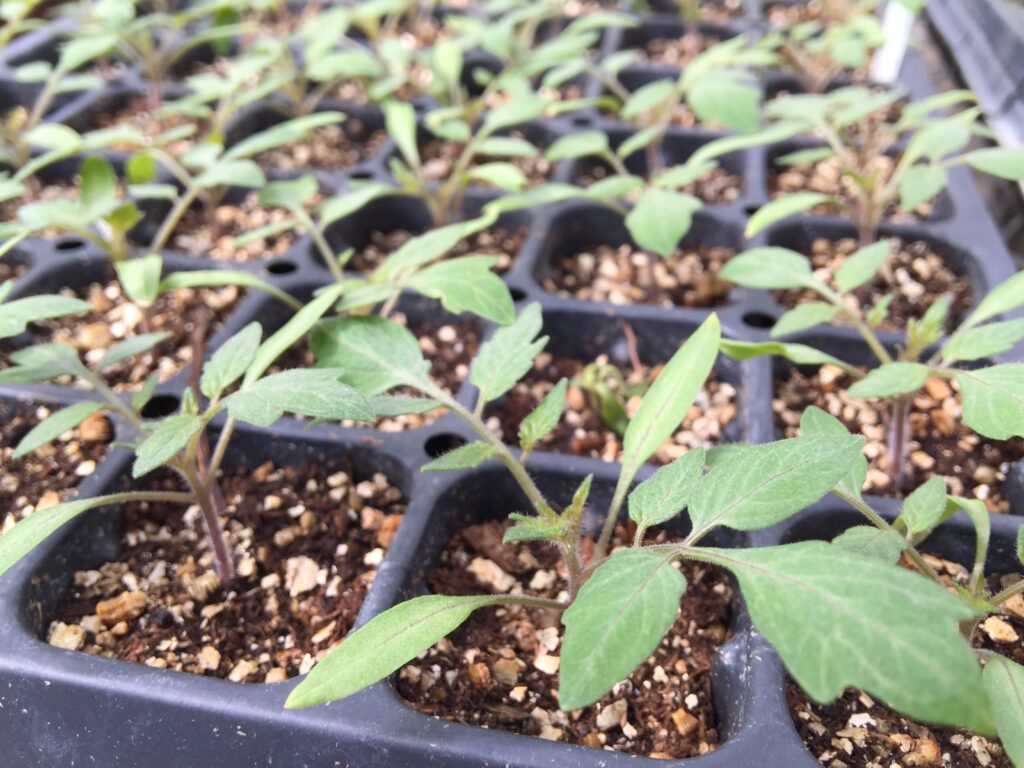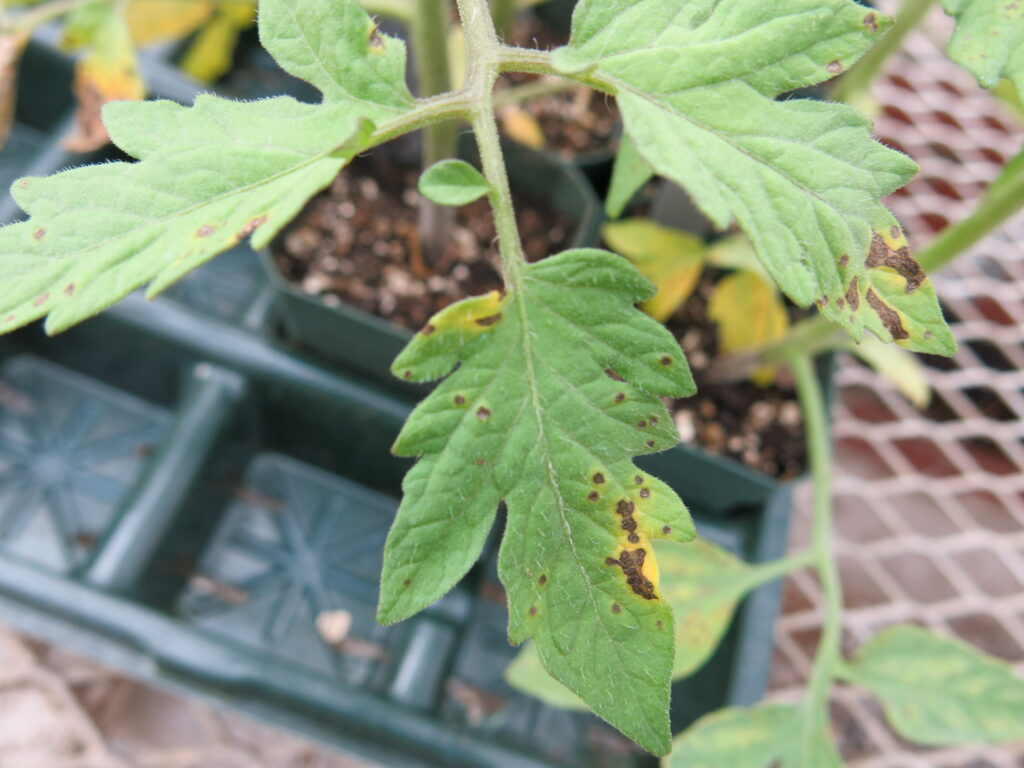Manage Bacterial Spot on Your Tomato Transplants
go.ncsu.edu/readext?782484
en Español / em Português
El inglés es el idioma de control de esta página. En la medida en que haya algún conflicto entre la traducción al inglés y la traducción, el inglés prevalece.
Al hacer clic en el enlace de traducción se activa un servicio de traducción gratuito para convertir la página al español. Al igual que con cualquier traducción por Internet, la conversión no es sensible al contexto y puede que no traduzca el texto en su significado original. NC State Extension no garantiza la exactitud del texto traducido. Por favor, tenga en cuenta que algunas aplicaciones y/o servicios pueden no funcionar como se espera cuando se traducen.
Português
Inglês é o idioma de controle desta página. Na medida que haja algum conflito entre o texto original em Inglês e a tradução, o Inglês prevalece.
Ao clicar no link de tradução, um serviço gratuito de tradução será ativado para converter a página para o Português. Como em qualquer tradução pela internet, a conversão não é sensivel ao contexto e pode não ocorrer a tradução para o significado orginal. O serviço de Extensão da Carolina do Norte (NC State Extension) não garante a exatidão do texto traduzido. Por favor, observe que algumas funções ou serviços podem não funcionar como esperado após a tradução.
English
English is the controlling language of this page. To the extent there is any conflict between the English text and the translation, English controls.
Clicking on the translation link activates a free translation service to convert the page to Spanish. As with any Internet translation, the conversion is not context-sensitive and may not translate the text to its original meaning. NC State Extension does not guarantee the accuracy of the translated text. Please note that some applications and/or services may not function as expected when translated.
Collapse ▲For vegetable growers (both commercial and home gardeners), springtime often brings to mind tomato transplants. However, sometimes diseases occur on these transplants, which can be discouraging. One of the most destructive diseases is bacterial spot on tomato caused by species of bacteria in the genus Xanthomonas. This pathogen can affect tomato transplants and lead to outbreaks in the field. But, there are measures you can take to avoid this disease.
How does bacterial spot get on my tomato transplants?
The pathogen that causes bacterial spot typically enters a production area through infested seed. Only one infected seed is needed to start an outbreak. Then the bacteria is easily spread by through water splash when watering and through touching plants. Although transplants may not look like too affected by bacterial spot in the greenhouse, once they are planted in the field, the frequent rain events, high humidity, and heavy morning dew encourages disease develop and can lead to loss of foliage, reduced yield, and spotted fruit. The bacterial spot on tomato and pepper disease factsheet explains the disease in more detail.
What does bacterial spot look like?
Bacterial spot on tomato leaves typically appears as numerous small, dark brown spots on that sometimes have a yellow halo. Spots can grow together causing larger spots that eventually lead to leaf blighting and defoliation.
How to avoid bacterial spot on tomato?
- Purchase tomato seed from a reputable source.
- Avoid buying seed over auction websites or unknown sources.
- If you save seed or have raw seed, be sure to treat them with either hot water or dilute bleach solution. See the Southeastern Vegetable Crop Handbook (page 304 in the 2021 version) for instructions.
- Start with a clean greenhouse and equipment.
- Use new pots and/or trays.
- If you must re-use trays, be sure to remove crop debris and media before sanitizing or the sanitizer will not be as effective.
- Remove crop debris and sanitize all equipment and benches used in the greenhouse.
- Remove weeds from the greenhouse.
- Avoid prolonged leaf wetness.
- The bacteria that causes bacterial spot is encouraged by prolonged leaf wetness. Since most transplants are watered overhead, you cannot avoid getting the leaves wet. However, you can control WHEN you water. Try to water at a time of day when leaves can dry quickly (morning) and avoid watering at night when leaves are likely to stay wet for a prolonged period of time.
- Use preventative pesticides.
- Homeowners are encouraged to use the practices listed above.
- Commercial growers can use preventative bactericides as listed in this disease factsheet. Copper tolerance is common in the pathogen that causes bacterial spot, even in populations from the greenhouse. Growers are encouraged to use either streptomycin (if there is a lack of heavy use of this product in the facility) or Actigard.
What do I do if I suspect bacterial spot on my tomato transplants?
- Get a diagnosis first.
- Contact your local Extension agent. You can find your County Center to help you get your plants diagnosed accurately as other diseases can occur on tomato.
- Send to the NC State Plant Disease and Insect Clinic. Your county agent can help you submit a proper sample.
- Dispose of affected trays or plants and monitor the remaining healthy plants.
- Bacterial spot and other diseases can spread rapidly. Often the disease has already spread to plants not yet showing symptoms, so remaining healthy plants should be monitored.
- Once bacterial spot is detected, plants should be destroyed. There are no “curative” pesticides — once a plant is infected it will not recover.




